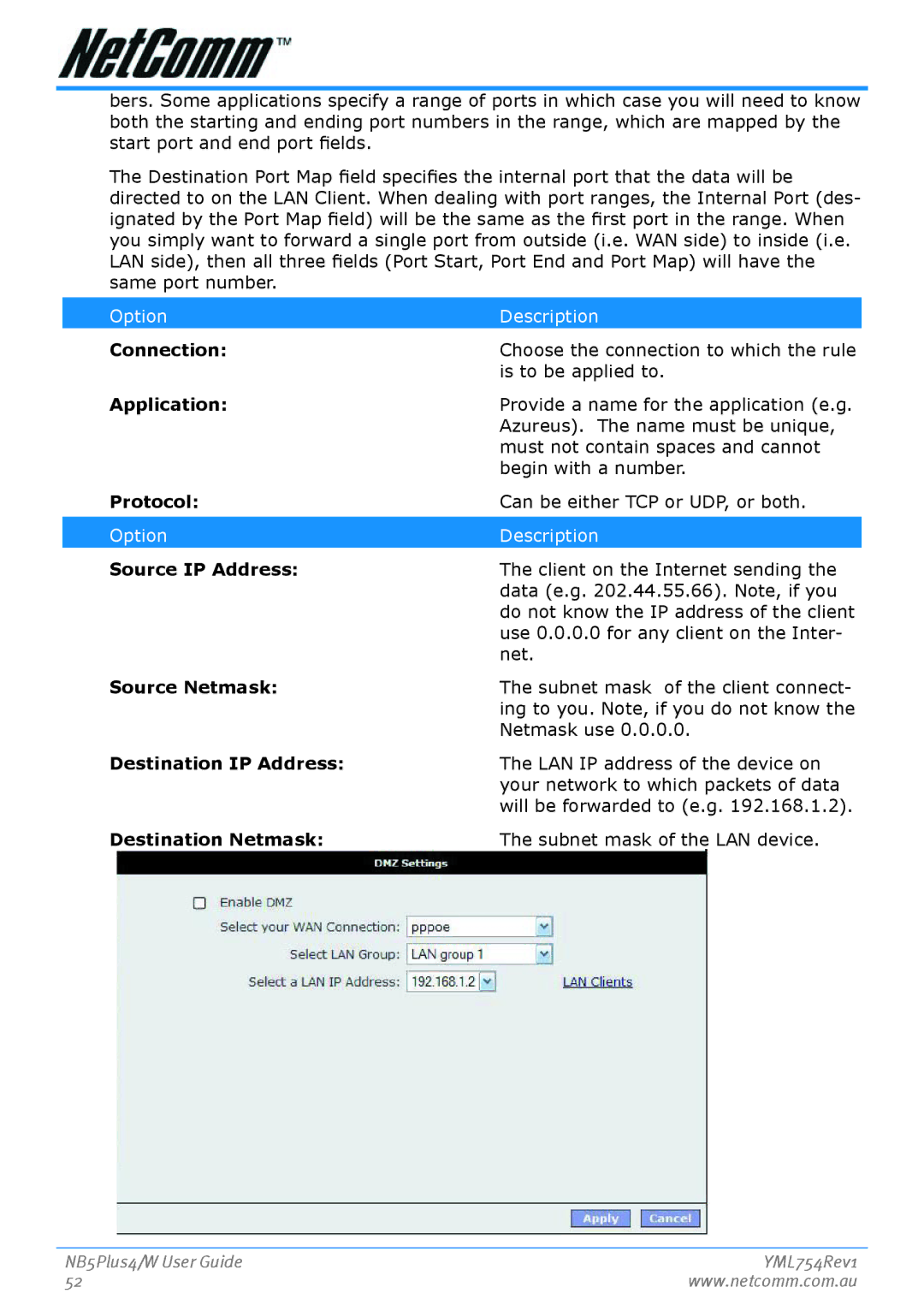
bers. Some applications specify a range of ports in which case you will need to know both the starting and ending port numbers in the range, which are mapped by the start port and end port fields.
The Destination Port Map field specifies the internal port that the data will be directed to on the LAN Client. When dealing with port ranges, the Internal Port (des- ignated by the Port Map field) will be the same as the first port in the range. When you simply want to forward a single port from outside (i.e. WAN side) to inside (i.e. LAN side), then all three fields (Port Start, Port End and Port Map) will have the same port number.
Option | Description |
Connnection: | Choose the connection to which the rule |
| is to be applied to. |
Application: | Provide a name for the application (e.g. |
| Azureus). The name must be unique, |
| must not contain spaces and cannot |
| begin with a number. |
Protocol: | Can be either TCP or UDP, or both. |
|
|
Option | Description |
Source IP Address: | The client on the Internet sending the |
| data (e.g. 202.44.55.66). Note, if you |
| do not know the IP address of the client |
| use 0.0.0.0 for any client on the Inter- |
| net. |
Source Netmask: | The subnet mask of the client connect- |
| ing to you. Note, if you do not know the |
| Netmask use 0.0.0.0. |
Destination IP Address: | The LAN IP address of the device on |
| your network to which packets of data |
| will be forwarded to (e.g. 192.168.1.2). |
Destination Netmask: | The subnet mask of the LAN device. |
NB5Plus4/W User Guide | YML754Rev1 |
52 | www.netcomm.com.au |
